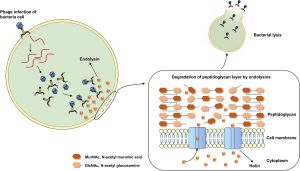Researchers have made significant strides in functional genomics with the development of a new CRISPR interference (CRISPRi) method, which enables simultaneous targeting of multiple genomic loci using truncated guide RNAs. This innovative approach not only expands the targeting scope of existing CRISPRi techniques but also maintains the efficacy needed to disrupt transcription factor binding sites across various human tissues.
The study, recently published, focuses on the need for improved methodologies to explore the role of cis-regulatory elements (CREs) — such as enhancers, promoters, and silencers — which are pivotal for gene expression and contribute significantly to cellular functions and diseases. With over one million human CREs cataloged across different cell types, researchers face challenges characterizing their effects due to their abundance and complexity.
Utilizing catalytically dead Cas9 (dCas9) fused with the KRAB repressive protein, the team introduced truncated guide RNAs (gRNAs) ranging from 9 to 20 nucleotides. By testing these altered guides, they discovered reliable on-target efficacy down to spacer lengths of just 9 nucleotides. This reduced length allows for broader genomic coverage as each truncated guide can match multiple potential binding sites, making it easier to explore gene regulatory networks.
"A single truncated guide can target CRISPRi to hundreds of TF binding sites, prospectively targeting functional regulatory elements," the authors explain. This capability was demonstrated through the screening of over 13,000 potential binding sites for the CCCTC-binding factor (CTCF), which has functions related to genomic insulation and organization.
The methodology developed offers researchers the potential to identify and characterize specific binding sites and functional motifs more efficiently than prior high-throughput methods allowed. Earlier techniques often faced limitations due to mild effect sizes and the large number of elements to be examined. With the new screening method, researchers engaged with KRAB-dCas9 to assess the activity levels and effects on multiple sequences simultaneously, providing them with improved tools for high-throughput analyses.
This innovative approach provides insights not only for basic research but also holds promise for translational applications. Researchers suggest it may be particularly pivotal for studying the functional impacts of genetic variations linked to diseases and could facilitate the development of precision medicine strategies.
"This is a unique property of dCas9 moieties, as catalytically active Cas9 is incapable of on-target cleavage with guides shorter than 17nt," they note. The approach outlined allows researchers to not only characterize individual cis-regulatory elements but also to investigate the interrelations among multiple factors influencing gene regulation.
Future investigations will likely continue leveraging this method to unravel the complex regulatory networks and mechanisms frequently implicated in diseases, establishing it as a standard tool for genomic insights. By enabling high-throughput screening and precise disruption of transcription factor binding sites, it has the potential to significantly advance our grasp of gene expression dynamics and cellular responses.



